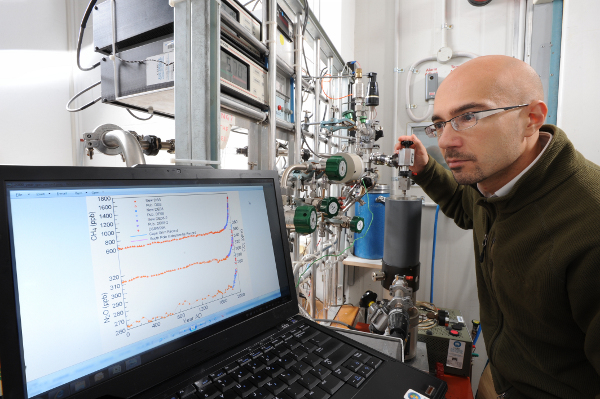Greenland ice core records provide a vision of the future

Ice cores drilled in the Greenland ice sheet, recounting the history of the last great warming period more than 120,00 years ago, are giving scientists their clearest insight to a world that was warmer than today.
In a paper published on January 24th 2013, in the journal Nature, scientists have used a 2,540 metre long Greenland ice core to reach back to the Eemian period 115-130 thousand years ago and reconstruct the Greenland temperature and ice sheet extent back through the last interglacial. This period is likely to be comparable in several ways to climatic conditions in the future, especially the mean global surface temperature, but without anthropogenic or human influence on the atmospheric composition.
The Eemian period is referred to as the last interglacial, when warm temperatures continued for several thousand years due mainly to the earth’s orbit allowing more energy to be received from the sun. The world today is considered to be in an interglacial period and that has lasted 11,000 years, and called the Holocene.
“The research results provide new benchmarks for climate and ice sheet scenarios used by scientists in projecting future climate influences.”
Dr Mauro Rubino, CSIRO Marine and Atmospheric Research
“The ice is an archive of past climate and analysis of the core is giving us pointers to the future when the world is likely to be warmer”, says CSIRO’s Dr Mauro Rubino, the Australian scientist working with the North Greenland Eemian ice core research project.
Dr Rubino says the Greenland ice sheet is presently losing mass more quickly than the Antarctic ice sheet. Of particular interest is the extent of the Greenland continental ice sheet at the time of the last interglacial and its contribution to global sea level.
Deciphering the ice core archive proved especially difficult for ice layers formed during the last interglacial because, being close to bedrock, the pressure and friction due to ice movement impacted and re-arranged the ice layering. These deep layers were “re-assembled
 Follow
Follow